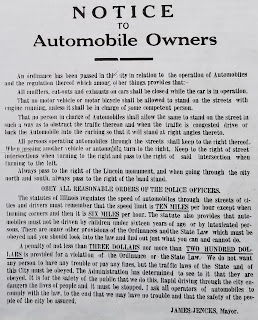Pictured: A hand sketch of people travelling on old dusty roads to Bunker Hill by Stage coach
Read our earlier blog posting about the Bunker Hill Hard Road at ... https://bunkerhillhistory.blogspot.com/2015/04/a-hard-road-through-bunker-hill.html
When the first homesteaders came to Bunker Hill, there were no roads as we think of them today. You would just go out in the direction of your destination and go across country. Over time, certain paths and trails were more heavily traveled and became the early roads. As people went through the road and made ruts, it would wash deeper and deeper making the road bed lower than the sides of the road. There were no organized maintenance of these roads. People often had hard times getting to and from town.
In dry weather, the dust was six to eight inches deep and sometimes the visibility was cut to almost zero when following another vehicle. Getting stuck in the mud was one of the inevitable happening following big rain storms or in rainy or thawing seasons. Some teams and wagons would get stuck the axle deep slop. Sometimes travelers would have four or five horses per wagon to pull it through muddy roads. Not only the main road, but all roads through the area were like this at some time. After many years of traveling this way, residents of the community began to complain.
Pictured: Travelling was done by horseback on dirt roads to the Lincoln Post Office
The town council, for the purpose of keeping streets, alleys, and highways in repair, was authorized and empowered to require every able bodied male over twenty-one years of age and under fifty to labor on streets, any number of days not exceeding three in each year.

Pictured: Looking South on Franklin Street before paved roads were introduced.
When the practice of oiling roads started, the neighbors would chip in and oil the roads. Very little oil was spread on country roads. This job was not done mechanically, but was done by manual labor. Very few streets were all weather during the winter months. In 1923, the city began to oil the streets. The roads and city streets were very messy and the oil ran off the dust like water.
Pictured: North Washington Street before 1920's
In 1925, Senator A. Cuthbertson, who was a former merchant and resident of Bunker Hill, initiated the idea of a hard road to the area that would replace the old stage coach road running north and south through town. The planning was done in the next several years with Cuthbertson's help.
Pictured: The Lincoln statue before the hard roads
The road work started in Bunker Hill in 1927. One problem that had arisen was that the state wanted to take the Lincoln Statue out when the road was put in, however, popular sentiment won out and the road was built around the statue instead.
The foundation of the road was made from bricks and dirt. Workers who helped on the road used over one hundred mules to haul materials to construct the foundation. Big scoops were used to move and to place materials where they wanted them. After the foundation was finished, the concrete was poured and smoothed.
Pictured: The map of the first hard road through Bunker Hill
September 28, 1928, there was a big celebration to celebrate the opening of the hard road. The old stage coach that had run the route through here on the Springfield and St. Louis route from 1822-1850 was brought here from Edwardsville for the celebration. There was a big chicken dinner. It rained so hard that the celebration had to be moved to the new Lincoln Hall. The scheduled platform dance was postponed until October 6, when a huge platform was laid out between the Lincoln monument and the bandstand for dancing.
Pictured: An early Bunker Hill automobile
The final touches were made and the new Route 112 was finished in the early 1930's. A few years after the route was completed, the hard road's name was changed to Route 159. There have been slight changes in the road since then. Several years after the road was completed, the road that ran south of Bunker Hill was changed. This alteration took out three turning points which were located just south of the present location of the big blue water storage tank and north of the Madison County line. The highway is still a two-lane road as it has been for eighty plus years, but has been resurfaced and widened to fit present day needs.
Pictured: Bunker Hill Ordinance-Notice to Automobile Owners
Read more about this and other Bunker Hill, IL historical stories at https://bunkerhillhistory.org/
--Cite this story: The Bunker Hill IL Historical Society. "A Look Back in Bunker Hill History." Bunker Hill Gazette-News, December 13, 2012, April 6, 2017.
Redford, Carol, and Betty Triplett. "Bunker Hill History." In Reflections: A History of the Bunker Hill-Woodburn Area, pp. 25-26. Bunker Hill: Bunker Hill Publications, 1993. Provided by the Bunker Hill Historical Society.








No comments:
Post a Comment